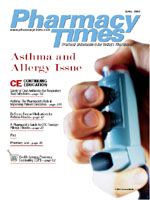Publication
Article
Pharmacy Times
Mouse Allergen Correlates with Asthma
In the first study to examine levels ofairborne mouse allergen in inner-cityhomes and to associate those levels withdust levels of the allergen, researchersfound that mouse allergen levels areoften comparable with those levels seenin animal facilities.
Noting that the number of homes withdetectable mouse allergen surprised theresearchers, lead author Elizabeth Matsui,MD, said that in many instances theallergen had reached levels that wouldcause asthma symptoms in sensitizedadults.
The researchers based their findingson allergen skin testing and home inspectionfor 100 inner-city children with asthma.Indicators of detectable airbornemouse allergens included cracks in doorsor walls, food remains in the kitchen, andmouse infestation.
The results of the study showed thatdust samples from all the bedrooms testedpositive for mouse allergen. Allergenlevels that are >0.1 ng per m3 fall withinthe range found in animal facilities andmay trigger asthma symptoms. Theresearchers found those levels in about aquarter of the homes.
"The message for clinicians is to testfor allergic sensitization to mice in kidswith asthma, especially those living in theinner city,"concluded Dr. Matsui. (Thefindings were reported in the Journal ofAllergy and Clinical Immunology, February2005.)







